
Browse an alphabetical list of photographs. These historical images portray people, places, and events before, during, and after World War II and the Holocaust.
<< Previous | Displaying results 2301-2350 of 2641 for "Photo" | Next >>
A synagogue used as a warehouse for the belongings of deported Jews. Szeged ghetto, Hungary, 1944.

A Syrian girl looks over the Domiz refugee camp outside Duhok, Iraqi Kurdistan. Sepember 5, 2015.
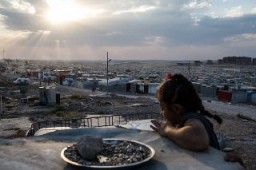
Tadek Soroka (right), a Pole who helped Aron and Lisa escape from Poland. This photograph was sent to the Dermans after the war. Date and place unknown.
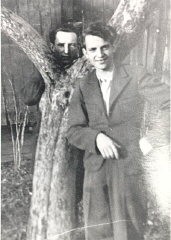
A tank guards the entrance to the Palace of Justice in Nuremberg, Germany, site of the International Military Tribunal. The trial formally opened in on November 20, 1945, just six and a half months after Germany surrendered.
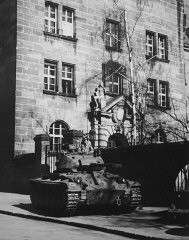
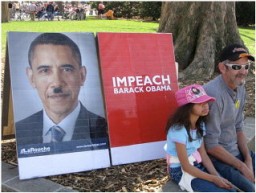
Jewish teenagers study electricity at a vocational ORT (Organization for Rehabilitation through Training) school in the Cremona displaced persons (DP) camp, Italy, 1945–1947. Shie Zoltak is standing on the far left. Standing on the far right is Shie's uncle, Abraham Lisogurski, who is the instructor.
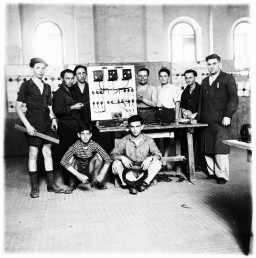
A group of Polish Jewish children (known as the "Tehran Children"), who arrived in Palestine via Iran, at the Mikveh Israel agricultural village. Palestine, February or March 1943.
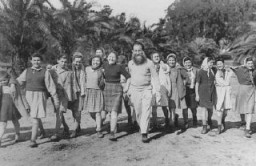
Polish Jewish refugee youth known as the "Tehran Children," who arrived in Palestine via Iran, learn agricultural skills. Ayanot, Palestine, 1943.
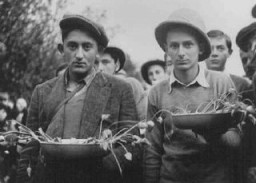
Soviet leader Joseph Stalin (left), US president Franklin D. Roosevelt (center), and British prime minister Winston S. Churchill (right) at the Tehran Conference. Tehran, Iran, between November 28 and December 1, 1943.
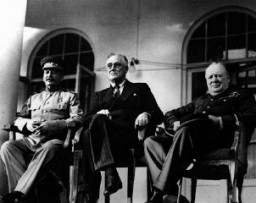
The SS Quanza was a Portuguese ship chartered by Jewish refugees attempting to escape Nazi-dominated Europe in August 1940. Passengers with valid visas were allowed to disembark in New York and Vera Cruz, but that left 81 refugees seeking asylum. On September 10, 1940, they sent this telegram to First Lady Eleanor Roosevelt to implore her for help.
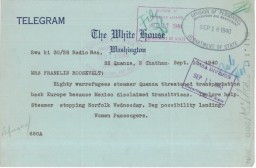
One of the tent camps used to detain Jewish displaced persons denied entry into Palestine by the British. Cyprus, August 1946-February 1949.
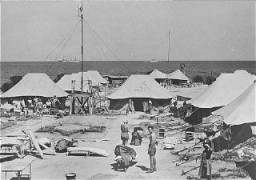
Runners competing in the 800-meter race at the Olympic games in Berlin. In this photograph, American John Woodruff is just visible in the outside lane. He came from behind to win the race in 1:52.9 minutes. Source record ID: 95/73/12A.
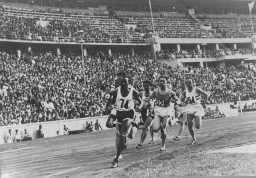
The accused and their defense attorneys in the courtroom during the International Military Tribunal. Nuremberg, Germany.
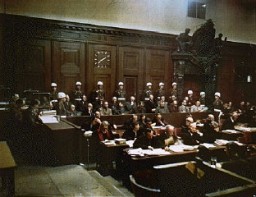
The Aigner family of Nove Zamky, Czechoslovakia. The town was occupied by Hungary. Laszlo (Leslie) Aigner (standing, back) survived the Auschwitz camp; his mother (seated) and sister Marika (standing, right) were gassed there. May 1944.
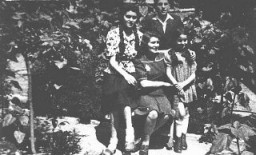
Members of the Zoska battalion of the Armia Krajowa stand atop a German tank captured during the 1944 Warsaw uprising. The tank was used by the battalion during its capture of the Gesiowka concentration camp. Warsaw, August 2, 1944.
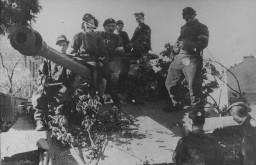
President Franklin D. Roosevelt and British Prime Minister Winston Churchill during the Atlantic Conference on Placentia Bay in Newfoundland, Canada. Also pictured are the president’s sons, Franklin D. Roosevelt, Jr. (far left) and Elliott Roosevelt (far right). August 9, 1941.

Wearing numbers, the defendants in the Bergen-Belsen Trial sit in the courtroom in Lüneburg, Germany. The Belsen Trial began on September 17, 1945, and was one of the first war crimes trials held after World War II. IWM (HU 59545)
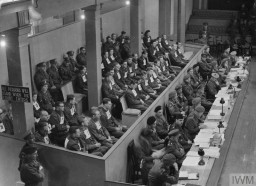
A view of the Bergen-Belsen concentration camp after the liberation of the camp. Bergen-Belsen, after April 15, 1945. The 63rd Anti-tank Regiment and the 11th Armoured Division arrived at the Bergen-Belsen concentration camp on April 15, 1945. When British troops entered the camp, they were totally unprepared for what they found. Inside were about 55,000 prisoners, many of whom were emaciated and ill and in desperate need of medical attention. Thousands of corpses in various stages of decomposition lay…
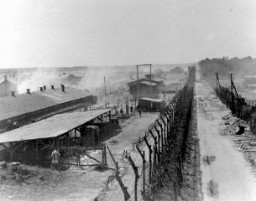
The Black Wall, between Block 10 (left) and Block 11 (right) in the Auschwitz concentration camp, where executions of inmates took place. Poland, date unknown.
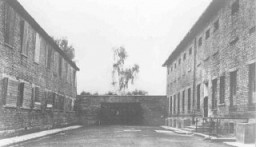
The bodies of Jewish women exhumed from a mass grave near Volary. The victims died at the end of a death march from Helmbrechts, a subcamp of Flossenbürg. Germans were forced to exhume them in order to give the victims proper burial. Volary, Czechoslovakia, May 11, 1945.
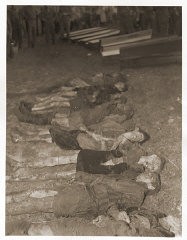
The Boerneplatz synagogue in flames during the Kristallnacht pogrom (the "Night of Broken Glass"). Frankfurt am Main, Germany, November 10, 1938.

A postwar photograph of the Breendonk internment camp in Belgium. In August 1940, the Germans, who had occupied Belgium in May of that year, turned the fortress into a detention camp.
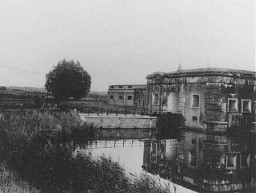
The charred corpse of a prisoner killed by the SS in a barn just outside of Gardelegen. The SS guards locked the prisoners, who were on a death march from the Dora-Mittelbau camp, in a barn, which was then set ablaze. Gardelegen, Germany, April 16, 1945. This image is among the commonly reproduced and distributed, and often extremely graphic, images of liberation. These photographs provided powerful documentation of the crimes of the Nazi era.
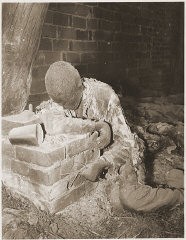
The charred remains of former prisoners in two crematoria ovens in the newly liberated Buchenwald concentration camp. Buchenwald, Germany, April 14, 1945. This image is among the commonly reproduced and distributed, and often extremely graphic, images of liberation. These photographs provided powerful documentation of the crimes of the Nazi era.
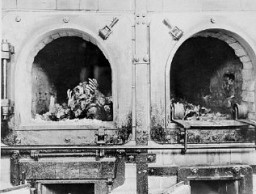
The courtroom during the Einsatzgruppen Trial of the Subsequent Nuremberg Proceedings. Chief Prosecutor Benjamin Ferencz stands in the center of the room. He is presenting evidence. Nuremberg, Germany, between September 29, 1947, and April 10, 1948.
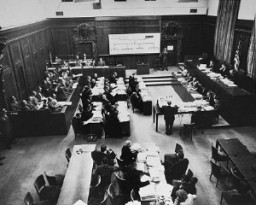
View of the courtroom as seen from the interpreters' section during the IG Farben Trial. The defense lawyers are in the foreground, the defendants are in the dock to the right, and the spectators' gallery is on the far side of the courtroom.
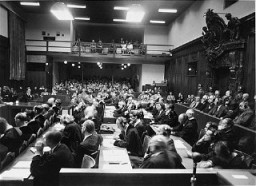
View of the courtroom during the trial of John Demjanjuk. Chief defense counsel Mark J. O'Connor addresses the court during the first session of the trial. Jerusalem, Israel, February 16, 1987.
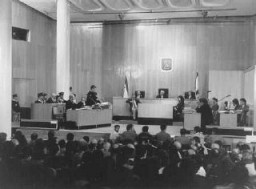
The courtroom in the Palace of Justice, chosen as the location for the International Military Tribunal trial of war criminals. This photograph shows the courtroom before any repairs or alterations were made. Nuremberg, Germany, August-September 1945.
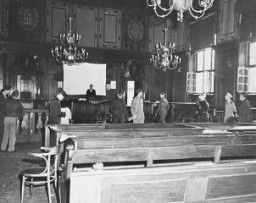
Karl Höcker's photograph album includes both documentation of official visits and ceremonies at Auschwitz as well as more personal photographs depicting the many social activities that he and other members of the Auschwitz camp staff enjoyed.
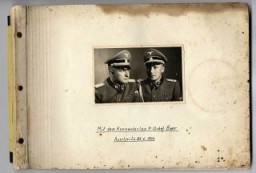
The Danish Freedom Council, Denmark's unofficial government-in-exile from July 1944 to May 1945, was made up of leaders of the four main resistance groups. London, Great Britain, between July 1944 and May 1945.
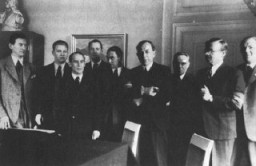
The defendants' box at the Nuremberg trial. Hermann Göring is seated at the far left of the first row. Nuremberg, Germany, 1945-1946.
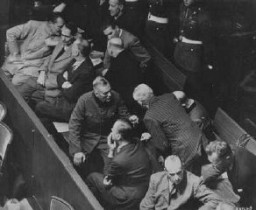
The defendants' dock and members of the defense counsel during the Doctors Trial. Nuremberg, Germany, December 9, 1946–August 20, 1947.
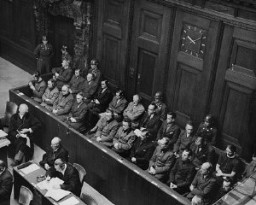
The defendants in the dock during the Justice Case, Case #3 of the Subsequent Nuremberg Proceedings. Nuremberg, Germany, 1947.
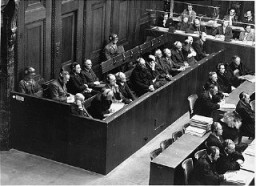
The defendants in the dock (at rear, with headphones) and their lawyers (front) follow the proceedings of the Hostage Case, case #7 of the Subsequent Nuremberg Proceedings. Nuremberg, Germany, 1947-48.

This multistory complex served as the Drancy transit camp. The overwhelming majority of Jews deported from France were held here prior to their deportation. Drancy, France, 1941–44.
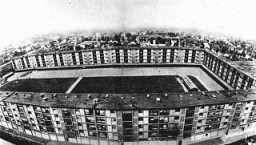
View of the entrance to the "Gypsy camp" on Brzezinska Street in the Lodz ghetto in occupied Poland. Photograph taken in 1942.
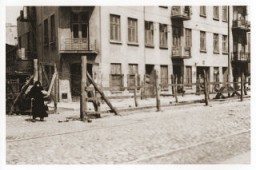
The Evian Conference on Jewish refugees. From left to right are French delegate Henri Berenger, United States delegate Myron Taylor, and British delegate Lord Winterton. France, July 8, 1938.
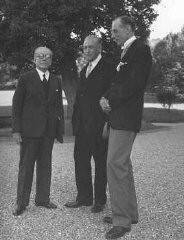
The extended Derman family. Top row, left to right: Aron, Lisa, Howard, Miriam, Daniel, Ari, Gordon, and Barbara (Howie's wife). Front row, left to right: Rachel, Yali, Evan, Gabe, Courtney, Ben, and Lindsay.
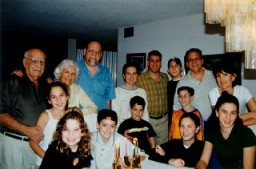
Michael Fink and his parents Manfred and Herta in the Westerbork camp, 1941–1944. Westerbork's primary role was as a transit camp. However, there was also a long-term camp population there. The Finks were among these residents. The family was in Westerbork until the spring of 1944, when they were deported to Theresienstadt. Michael and Herta survived, but Manfred was killed after being deported to Auschwitz-Birkenau and other concentration camps.
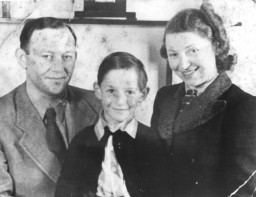
The Reichstag (German parliament) building burns in Berlin. Hitler used the event to convince President Hindenburg to declare a state of emergency, suspending important constitutional safeguards. Germany, February 27, 1933.
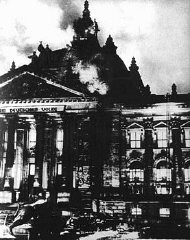
The “Gypsy camp” in Hodonín u Kunštátu (Hodonin bei Kunstadt), Protectorate of Bohemia and Moravia (Czech Republic), 1942.
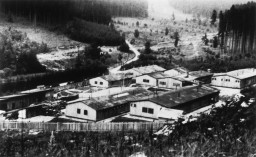
The Institute for Sexual Science was founded in Germany by Dr. Magnus Hirschfeld, a leading researcher of sex, sexuality, and gender. In 1933, the Nazis looted the institute and forced it to close. Photo published in 1924.
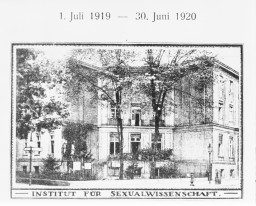
American judges (top row, seated) during the Doctors Trial, case #1 of the Subsequent Nuremberg Proceedings. Presiding Judge Walter B. Beals is seated second from the left. Nuremberg, Germany, December 9, 1946–August 20, 1947.
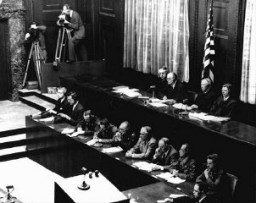
Exterior view of the Jewish orphanage run by Janusz Korczak. Established in 1912, the orphanage was located at 92 Krochmalna Street in Warsaw, Poland. Photo taken circa 1935.
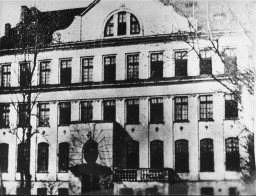
The Ku Klux Klan marches down Pennsylvania Ave in Washington, DC. Photograph by Harris & Ewing, 1926.

The Kusserow family was active in their region distributing religious literature and teaching Bible study classes in their home. They were Jehovah's Witnesses. Their house was conveniently situated for fellow Jehovah's Witnesses along the tram route connecting the cities of Paderborn and Detmold. For the first three years after the Nazis came to power, the Kusserows endured moderate persecution by local Gestapo agents, who often came to search their home for religious materials. In 1936, Nazi police…
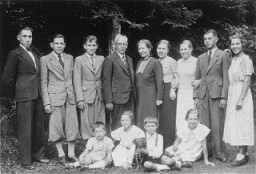
The Kusserow family home in Bad Lippspringe. The family, Jehovah's Witnesses, kept religious materials in the trunk of the car and distributed them from it as well. The Kusserow family was active in their region distributing religious literature and teaching Bible study classes in their home. Their house was conveniently situated for fellow Witnesses along the tram route connecting the cities of Paderborn and Detmold. For the first three years after the Nazis came to power, the Kusserows endured moderate…
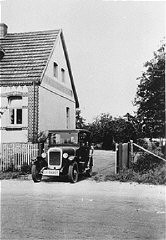
This photograph shows the Kusserow family home in Bad Lippspringe and the tram tracks in front of it. The Kusserow family members were active Jehovah's Witnesses in their region. They distributed religious literature and taught Bible study classes in their home. Their house was conveniently situated for fellow Witnesses along the tram route connecting the cities of Paderborn and Detmold. For the first three years after the Nazis came to power, the Kusserows endured moderate persecution by local Gestapo…
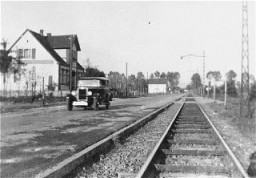
The main gate of the Wöbbelin concentration camp. On May 2, 1945, the 8th Infantry Division and the 82nd Airborne Division encountered the Wöbbelin concentration camp. Photograph taken upon the liberation of the camp by US forces. Germany, May 4, 1945.
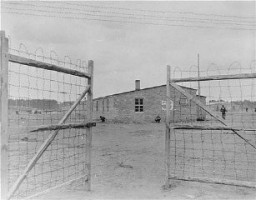
The Margules children wearing Jewish badges. Originally from Warsaw, the Margules family settled in Paris in the 1930s. Three of the children were deported and killed in 1942. Only one daughter (pictured at the bottom right) survived the war. Paris, France, 1941.
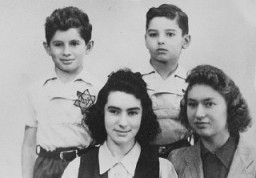
We would like to thank Crown Family Philanthropies, Abe and Ida Cooper Foundation, the Claims Conference, EVZ, and BMF for supporting the ongoing work to create content and resources for the Holocaust Encyclopedia. View the list of donor acknowledgement.